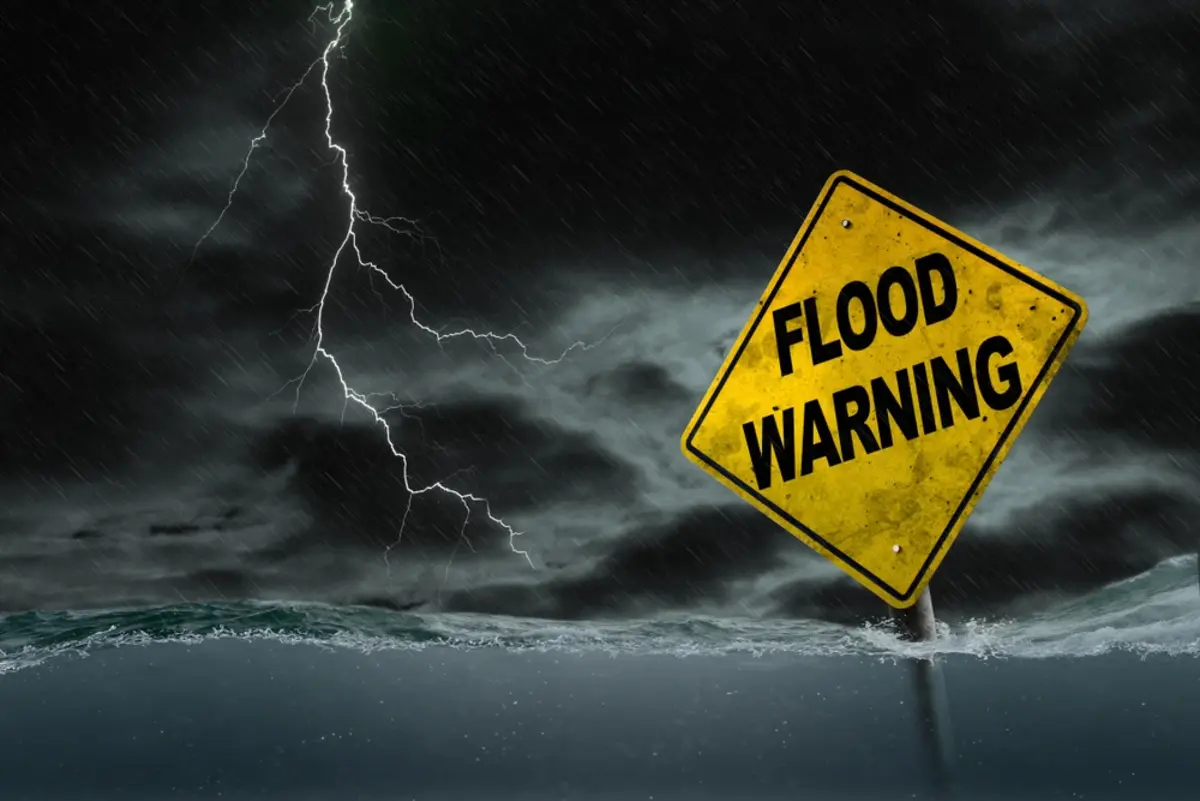Upstox Originals
Disaster-proofing India: The need for early warning systems and resilient cities

5 min read | Updated on September 12, 2025, 18:23 IST
SUMMARY
Extreme weather events have become more intense and frequent in India and around the world. In 2024, these led to 3,000 deaths and widespread destruction in India. Experts are calling for urgent action, including enhanced early warning systems, proactive disaster management and building climate-resilient cities to mitigate the crisis. The question remains: how can India combat this crisis with the speed and urgency it requires?

The rapid pace at which natural calamities are taking place requires a set of early warning systems in place.
Nearly 3,000 people died, 2 million hectares of crops and 80,000 homes were destroyed due to extreme weather related events in 2024, in India. The annual report on the state of India's environment by Centre For Science and Environment also reveals that extreme weather events happened somewhere in India on 88% of days in 2024. This should serve as a wake-up call for policymakers. As cloudbursts, landslides, incessant rains and unforgiving heat become the new normal, how prepared is India for the climate change happening at a rapid pace in South East Asia?
Climate scientists have pointed out that global warming has accelerated since 2010 by more than 50 per cent as compared to the rate of warming between 1970 and 2010, which was 0.18°C per decade. The Climate Risk Index 2025 ranked India as the sixth most affected country globally from 1993 to 2022, with losses of more than $180 billion.
Oceans are warming up leading to sudden and intense rain spells. As rain patterns change, the Himalayas become more vulnerable to weather events. Two back-to-back incidents in the Himalayan region this year have proved how fragile this mountainous region actually is and why immediate action is necessary. On August 14, 2025 the Chashoti area in the Western Himalayas was hit by a destructive debris flow. This was initially suspected to be a glacial lake outburst flood. Just days before, a similar incident had wreaked havoc in the Uttarkashi district where Dharali and Harsil villages were affected by a debris-laden flash flood. Both events can be attributed to extreme rainfall driving debris flows.
We are clearly in the midst of a climate emergency where action is necessary in the here and now. Dr Roxy Mathew Koll, a Climate Scientist at the Indian Institute of Tropical Meteorology, Pune, has prescribed the following measures in order to mitigate the climate crisis.
Forecasts are not enough, early warning systems needed
The rapid pace at which natural calamities are taking place requires a set of early warning systems in place. India has a world-class forecasting system. It can predict tropical weather conditions three days in advance but what is needed are landslide and flash flood forecasts too. Early warning systems must take into account local topography, demographics and infrastructure. Timely communication of risks is necessary which requires greater coordination between government departments and ministries. A dedicated research and development institution is needed to focus on early warning systems.
Proactive disaster management
It is necessary to disaster-proof regions at the district and panchayat levels. This would require a more proactive than a reactive approach. Proactive measures should be taken to protect the vulnerable population. Policies are required that can safeguard lives and livelihoods.
Identification of hotspots
The Indian Ocean is warming rapidly and glaciers are melting too. Assessing the vulnerable regions and identifying the hotspots is the crucial first step in managing disasters. A micro-level assessment needs to be done to measure frequency and intensity of exposure to climate risk.
Local communities are crucial
Educating people about climate risks and involving them in disaster preparedness is crucial to beating climate change. Local communities can bring about a big difference through activities like monitoring climate conditions, restoring local ecosystems and contributing through citizen science networks. Climate action and adaptation at local levels should go hand in hand with mitigation at global and national levels.
Data accessibility
Dr Koll says data accessibility and sharing are critical for tackling climate challenges in the country. India’s data accessibility policy requires that data from all ministries be open and shareable but poor implementation has created barriers in transparency. Data must be easily available to support research and decision-making within the country.
Building climate resilient cities
Climate change is happening in the present moment and the risk is real, not just for the vulnerable sections but also for urban dwellers living in prosperous cities.
In the World Bank’s latest report ‘Towards Resilient and Prosperous Cities in India 2025’, authors Asmita Tiwari and Natsuko Kikutake share that more than two-thirds of India’s urban dwellers will face the risk of surface flooding, potentially adding to losses of $5 billion by 2030. They say an integrated approach, which demarcates high-risk areas as no-build zones, improves city-wide drainage, promotes nature-based solutions that can absorb excess rainwater, and installs flood warning systems, is the only way to reduce this risk in urban areas.
The report also states that investments in adaptation will save over 130,000 lives from extreme heat impacts by 2050.
Auguste Tano Kouamé, World Bank Country Director, recommends investment in resilient urban development: “By investing in more green and resilient urban development, including housing, transport, and municipal services, cities can better mitigate extreme heat conditions and urban floods, and continue to grow and create jobs.”
The need of the hour is to build a disaster-proof India and the time to act is now.
By signing up you agree to Upstox’s Terms & Conditions
About The Author
Next Story
